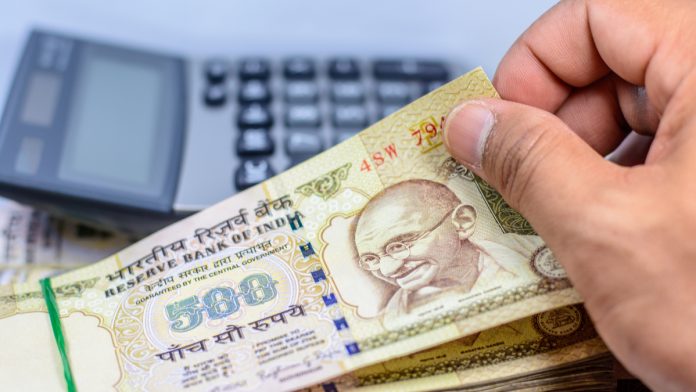- Indian Rupee (INR) remains depressed on the covid outlook
- India sees travel restrictions imposed across the globe
- US Dollar (USD) rebounds from session lows
- US treasury yields slip lower
The US Dollar Indian Rupee (USD/INR) exchange is advancing for a second consecutive session. The pair settled +0.47% higher on Monday at 74.85. At 12:00 UTC, USD/INR trades +0.1% at 74.94.
The Indian Rupee has started the week on a softer tone amid another surge in coronavirus infections raising the risk of more broadband lockdowns.
India’s total number of covid cases remains elevated. India has been reporting over 200,000 cases per day since mid April. This is well past its peak last year when it was reporting 93,000 cases a day. Deaths have also been rising to 1,619 deaths on Monday.
Many countries have now added India to a travel restrictions list amid concerns over a double mutation variant.
Oil prices continue to rise which is bad news for India, the world’s third largest importer of oil. WTI rose 6% across the previous week and is up a further 1.4% so far this week.
The US Dollar is rising versus the Indian Rupee. However, it is falling versus its major peers. The US Dollar Index, which measures the greenback versus a basket of major currencies trades -0.03% at the time of writing at 91.05. However, it has picked up from a 6.5 week low of 90.86 hit earlier in the session.
The US Dollar trades mildly lower however has recovered losses as US treasury yields give up gains. The benchmark US 10 year treasury yield trades -0.1% slipping below the key 1.60% level to 1.59%. The US Dollar is rising whilst US treasury yields slip lower which is a reverse move to what was seen in the first three months of the year.
The US economic calendar is light today and remains that way for most of the week. Investors will be watching for further developments around President Biden’s infrastructure stimulus package. Yesterday Biden met with a group of bipartisian congressional law makers in an attempt to pull together additional support for his $2.5 trillion spending plan.





